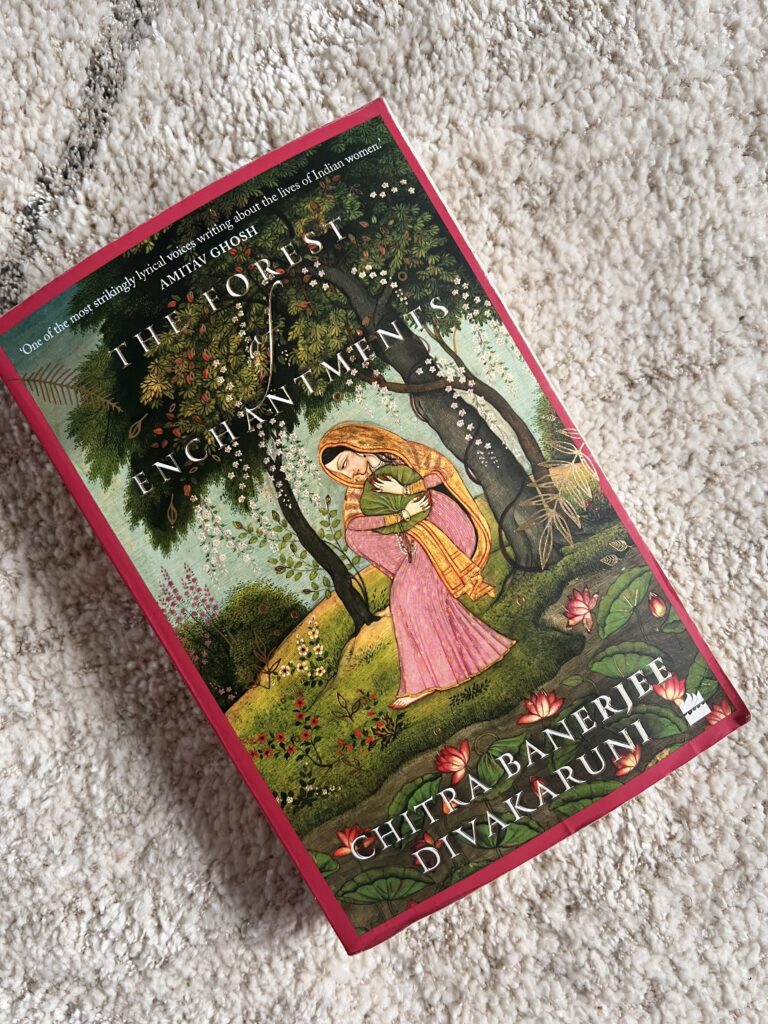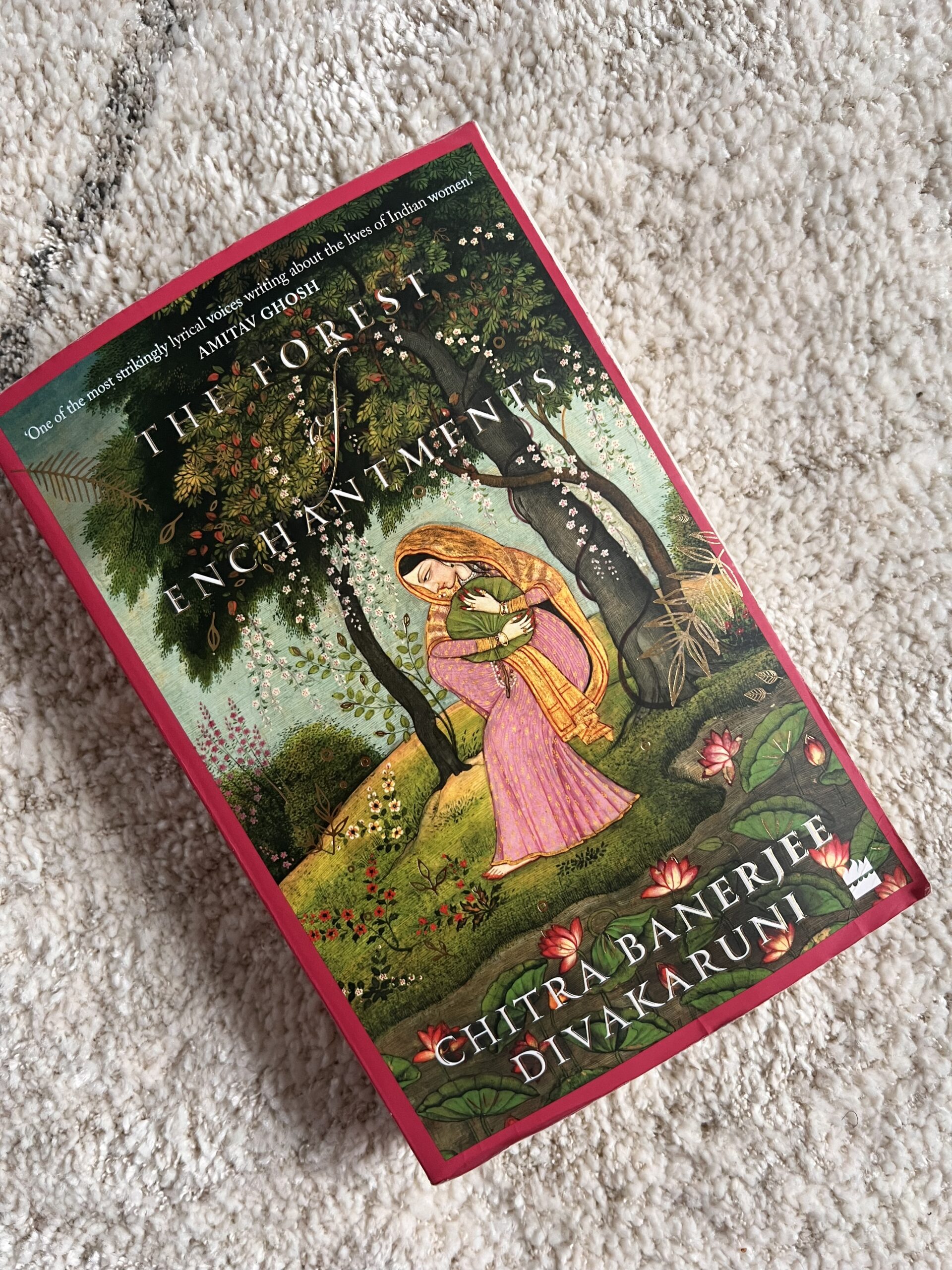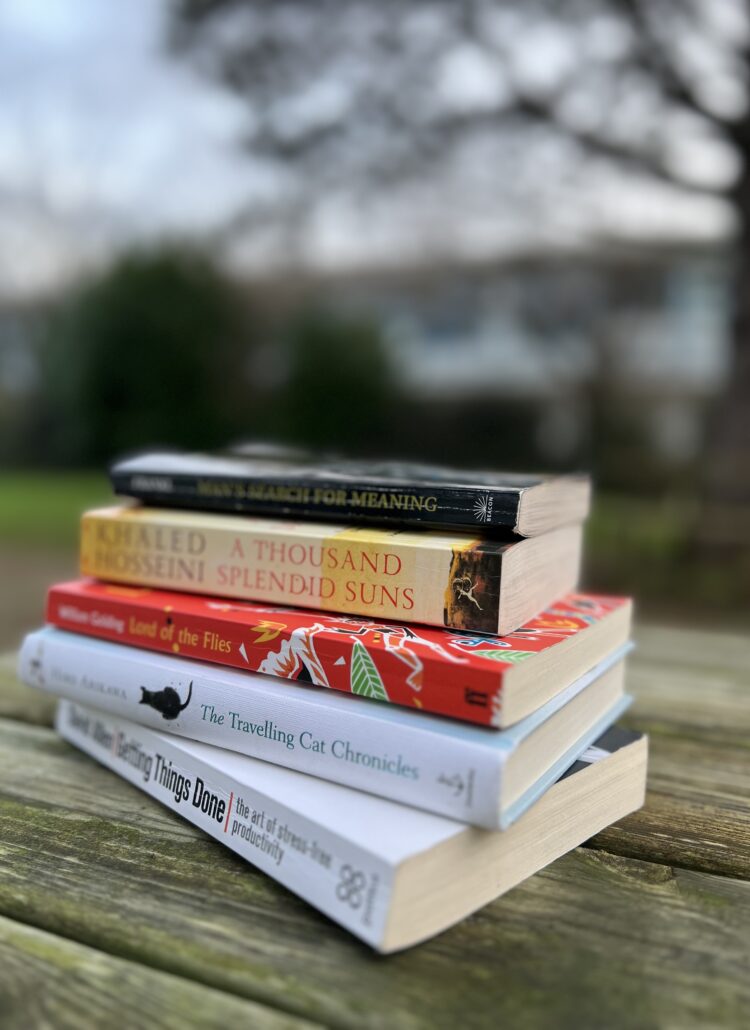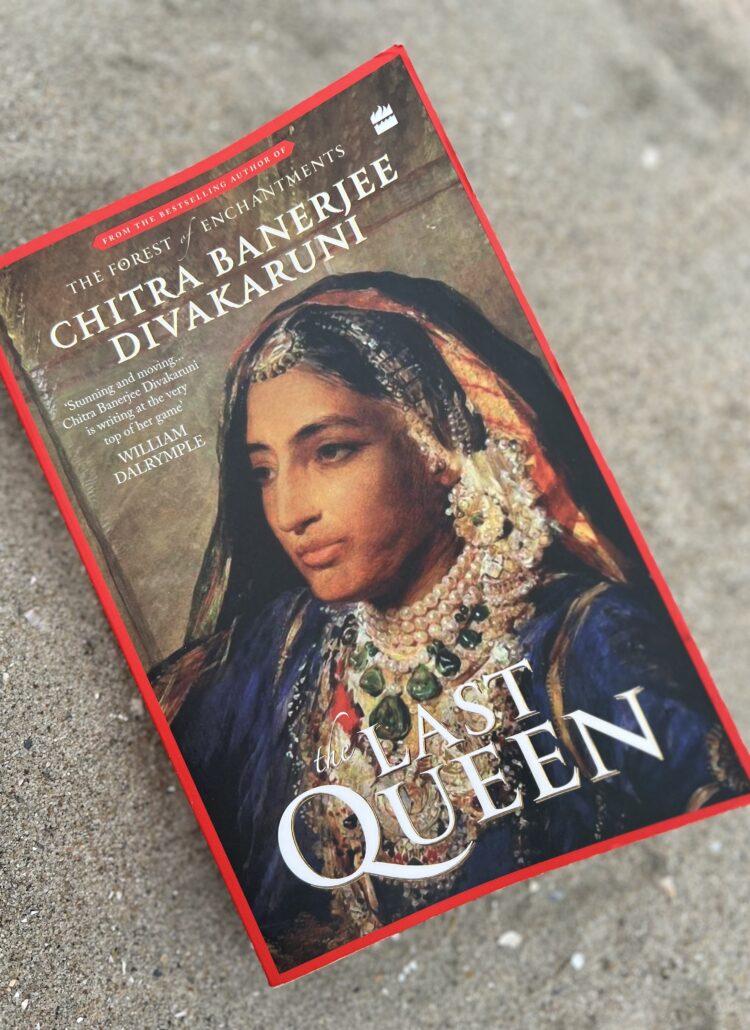“Most of all, I understood that things happen to us for many complicated reasons, arising from both the past and the future.”
– Chitra Banerjee Divakaruni, The Forest of Enchantments
Every time I am at the airport, I can’t contain my excitement for the possibility of exploring stores and food and shops. Some people absolutely hate it. Airport food, exorbitant prices, the atmosphere, everything about it. I love everything about airports! Before the list becomes too long, let’s talk about what tops the list for me. It’s the bookstalls, the time to actually surf through the array of books but also to actually get down to reading as soon as you like! This time was special. As, not only was I at the airport after two years, I was at various airports in India where I had plenty of books in English and also from Indian authors. This week’s post is about one such Author, Chitra Banerjee Divakaruni and her novel The Forest of Enchantments. Let’s first get to know a little more about her.
About the Author

Chitra Banerjee Divakaruni was born in Kolkata and finished her bachelors from the University of Calcutta. She moved to the U.S. to do masters and PhD. To support her education in the U.S. Chitra took odd jobs. She worked as a babysitter, store clerk, bread slicer in a bakery and a lab assistant etc. Chitra Banerjee now lives and teaches in Texas. She is professor of Creative Writing at the University of Houston. She is author of several books and poems. Her first collection of short stories Arranged Marriage won an American Book Award.
“It didn’t drain me as I thought it might. Instead, it invigorated me. Such was love’s magic—the giver gained more than the receiver.”
– Chitra Banerjee Divakaruni, The Forest of Enchantments
The first book I read of her is The Palace of Illusions, one of my favourite books. I mentioned this in one of my first few posts. It was the best seller in India for over a year. More about that later. She’s known for novels such as – Mistress of Spices, Sister of my Heart, Queen of Dreams, One Amazing Thing, Oleander Girl and Before we Visit the Goddess. Chitra has won several awards for her literary work and some of her work has also been adapted as Film and TV series.
Star rating
3 stars
Summary
“I don’t agree with you that the private life must be sacrificed for the public one. And that is the final advice that I leave for my children: my dearest boys, balance duty with love. Trust me, it can be done.”
– Chitra Banerjee Divakaruni, The Forest of Enchantments
Simply put, The Forest of Enchantments is the story of Ramayana from the perspective of Sita. What Sita was told about her birth and how she was raised in the palace of Maharaj Janak. It’s a fresh and modern perspective on the story of beloved Ram and Sita and the whole family around them. With this story Chitra has portrayed them more human than God and the events more logical than predestined. Yet it is a perfect blend of divine and humane. Looking at the modern take on the story of Ramayana, it could be compared to the Shiva trilogy by Amish Tripathi. Although Amish has shared his own version of Sita, Ram and Ravan through his series of novels.
The plot
“How innocent we’d been, thinking that if only we willed something hard enough, it would come true.”
– Chitra Banerjee Divakaruni, The Forest of Enchantment
Even though this is the story of Ramayana. A story many of us have heard since our childhood. Some of lucky ones have also seen the series by Ramanand Sagar. Needless to say the main plot remains the same. To tell it from Sita’s perspective, in The Forest of Enchantments the story begins with Sita going about her day like usual, but this is the day her life will change. She is certainly a princess and beloved daughter of Maharaja Janak and Maharani Sunaina. Sita is also a healer, she not only has the knowledge of herbs and medicines, she also has the magic touch. Her mother Sunaina has also emphasised on learning martial art for self-defence, sensing a danger lurking in the future.
“If you want to stand up against wrongdoing, if you want to bring about change, do it in a way that doesn’t bruise a man’s pride. You’ll have a better chance of success.”
– Chitra Banerjee Divakaruni, The Forest of Enchantment
As Sita is engaged in her daily duties of healing people, practicing martial art it’s time for her evening temple visit to Gauri Mandir. Little does she know this is the day that changes her life as today is when she meets Ram. Ram, who lifts the Shiva Dhanush and marries her. As the story progresses, she spends a decade as his wife and the princess of Ayodhya. Until the fateful day when Ram is exiled and she goes along with him and Laxman to the forest that always kept a strange temptation for her. We know the story about how they spend 12 years in the forest until Ravan abducts Sita and the huge battle ensues. Even though Ram rescued her, she has to testify her purity and loyalty not once but twice.
What I liked about the book
“And this is one of the final things I learn about love: it’s found in its purest form, on this imperfect earth, between mothers and young children, because there’s nothing they want except to make each other happy.”
– Chitra Banerjee Divakaruni, The Forest of Enchantment
I always appreciate a unique take on things, modern or otherwise. I read a fiction after a long time and despite reading, listening and watching Ramayana countless times, the story was engaging. It starts slow but as I progressed I was hooked to the story. It was interesting to see the elements where Sita is a healer and is expert in martial art. I liked that when it comes to telling her story, Rishi Valmiki asks Sita to write her version.
What I am not a fan of
“Why was it that our holy men who made a big deal of giving up so many things—comfort, fame, family—couldn’t seem to give up their tempers?”
– CHITRA BANERJEE DIVAKARUNI, The FOREST OF ENCHANTMENT
The story is interesting enough and I liked the experiments as well. It still felt a bit rushed and not imaginative enough. I am tempted to compare it with her other novel Palace of Illusions which is the story of Mahabharata from Draupadi’s perspective. I would say the story seems a bit bland comparatively. Perhaps Mahabharata was already set in a more modern time and had more complex characters. I still would say I saw more imagination and interest in the story. If I compare it with other authors on the same topic, Amish Tripathi’s version of Sita, Ram and Ravan is more daring and thought provoking. In that sense the The Forest of Enchantments feels more like a checking of the list than a work of passion.
Final thoughts
“Such rulers were adored by the citizens they protected, but often their families had to bear the brunt of sacrifice.”
– CHITRA BANERJEE DIVAKARUNI, The FOREST OF ENCHANTMENT
In the end I would say, Ramayan is an interesting story in any version. Chitra Banerjee has a different enough take with new elements to the characters and the overall story. I can also imagine when a story is told and retold It makes it quite difficult to tell it in a version that is different enough to keep the interest and similar enough to keep the soul of the original story intact. I would say Chitra has managed to do that beautifully. It is perhaps that I am too attached to the story of Ramayana, or the story of Draupadi in Palace of illusions. Reading this book left me a bit unsatisfied. I would still say it is a pleasurable read at least once.




